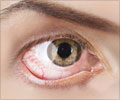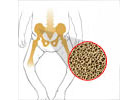
A prospective study from Massachusetts Eye and Ear, Brigham and Women’s Hospital (BWH) / Harvard Medical School (HMS), and Harvard School of Public Health (HSPH) set out to evaluate the association between the intake of these vitamins and EG. The researchers designed a prospective cohort study using more than 20 years of follow-up data from the Nurses’ Health Study (all female registered nurses) and the Health Professionals Follow-up Study (all male health professionals) from June 1, 1980 to May 31, 2010 (Nurses’ Health Study) and Jan. 1, 1986 to Dec. 31, 2010 (Health Professionals Follow-up Study). They observed that higher total folate intake was associated with a lower risk for EG/suspected exfoliation glaucoma (SEG), supporting a possible causal role of homocysteine in EG/SEG. Their results are published online in the April 3, 2014 issue of JAMA Ophthalmology.“We included a subset of 78,980 women and 41,221 men who were 40 years or older, free of glaucoma, had completed dietary questionnaires, and reported an eye examination during follow-up,” said lead author Jae H. Kang, Sc.D., Channing Division of Network Medicine, Department of Medicine, BWH/HMS. “Incident cases of EG/SEG, totaling 339 were first identified with the questionnaires and were subsequently confirmed with medical records. Multivariable relative risks for EG/SEG were calculated in each cohort and then pooled with meta-analysis.”The results showed that vitamin B6 and B12 intake was not associated with EG/SEG risk in pooled analyses (P= .52 and P= .99 for linear trend, respectively). However, there was a trend of a reduced risk of EG/SEG with higher total folate intake, with relations being stronger for higher folate intake from supplements than from diet alone.“Our conclusions are that higher folate intake is associated with a lower risk for EG/SEG, supporting a possible causal role of homocysteine in EG/SEG,” said senior author Louis Pasquale, M.D., Glaucoma Service Director, Mass. Eye and Ear. “More work needs to be done but these are critical insights that may give us a better understanding of how EG progresses, which helps to bring us closer to developing interventions or treatments that prevent this blinding disease.”
Source-Eurekalert











